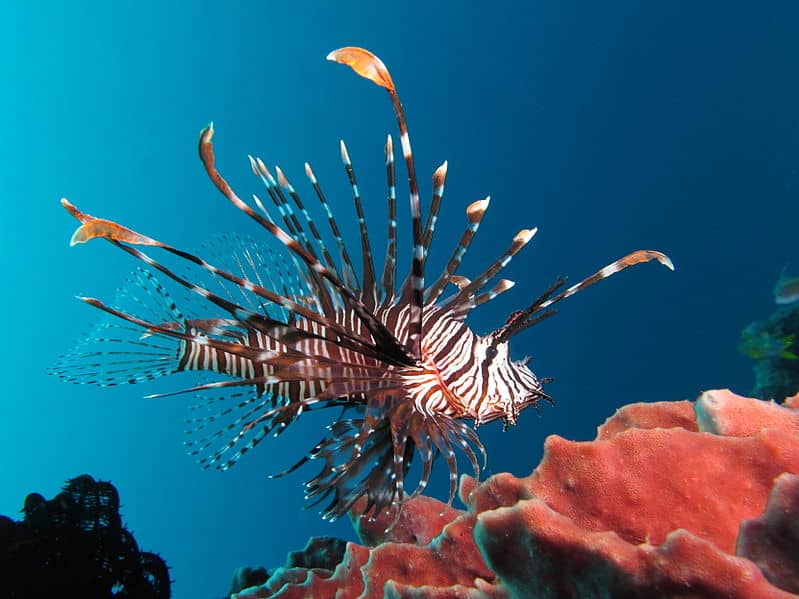Study Says Invasive Red Lionfish Owe Success to “Invisibility”
OutdoorHub Reporters 10.18.13

For years, the runaway success of red lionfish in the Caribbean Basin has produced much debate among biologists, but a new study published in PLoS One may have isolated one powerful advantage of the invasive species. Authors Oona Lönnstedt and Mark McCormick of Australia’s James Cook University believe that lionfish might be “invisible” to their prey.
“Lionfish are native to the Pacific, but have been taking over the Caribbean Basin ever since they were accidentally introduced almost 30 years ago,” McCormick told phys.org. “Their extreme success as an invasive predator has long been a mystery to ecologists worldwide.”
In the study, researchers took a number of juvenile damselfish and exposed them to three predator species. The damselfish were able to detect rockcod and Zebra turkeyfish, but the red lionfish were virtually undetected.
“Surprisingly, the common prey fish were unable to learn that the lionfish represented a threat, which was very different to their response to two other fish predators,” Lönnstedt said.
The lionfish managed to sneak up on every single damselfish put in their tank, a success rate that was not matched by the other two predators. When researchers turned to the use of damselfish experienced with predators, they found that fewer fish were caught by rockcod and Zebra turkeyfish, but it did not dampen the red lionfish’s success rate. It seemed to be that because the invasive lionfish were so visually different from native predators in the Caribbean Basin, prey fish often failed to recognize them as a threat. Their natural camouflage and lack of odor makes lionfish an impressive marine predator.
“Our findings suggest that lionfish are one of the definitive fish predators,” researchers wrote in the study. “Their feeding success is not achieved though speed and surprise, but through a unique form of crypsis that circumvents the well-established mechanism whereby prey fishes learn about their predators.”
The researchers stated that few cases of invasive predators have been more devastating to the United State’s East Coast and the Caribbean Basin than lionfish, calling the species an “ultimate predator.” Many biologists and conservationists would agree. Lionfish are veritable swimming arsenals. Spiny, venomous fin rays deter predators and have long been the bane of divers across their natural range. Lionfish venom has been documented to cause convulsions, dizziness, nausea, and in extreme cases even paralysis and heart failure in humans. When hunting, lionfish will blow jets of water at prey animals to disorient them and are characterized as “aggressive” in their depredation of smaller fish.
Of the many species of lionfish, only the red and common lionfish have established populations in the Atlantic Ocean and are deemed invasive. The species was accidentally introduced to Florida in the mid-1980s, reputedly because aquarium owners wanted to dispose of a few unwanted specimens, and quickly took hold across the region. Lionfish are native to the Pacific Ocean, where they are kept in check by a few, specialized predators. In the Atlantic, their only predator is often a larger lionfish.
According to the study, these “hyper-successful nuisance invaders” have already impacted the populations of native fish and the marine environments they inhabit.
“It is only by obtaining a detailed understanding of the encounter between the lionfish predator and its native prey that we can better understand why these predators may have become so successful in their novel system,” Lönnstedt and McCormick wrote.
According to the National Oceanic and Atmospheric Administration, the only significant form of population control for invasive lionfish are human anglers and conservation efforts.

